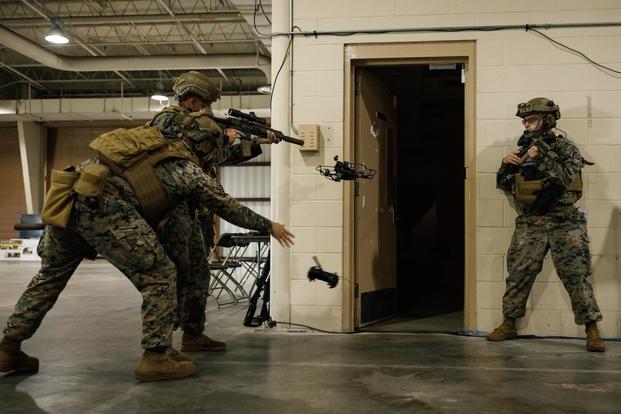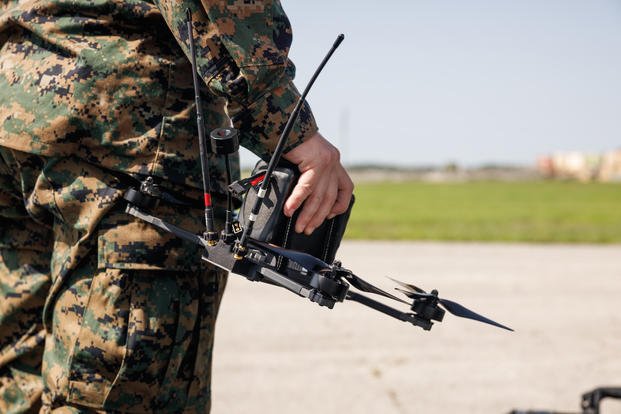The U.S. Marine Corps is stepping up its game in the fast-evolving world of drone technology by launching a specialized unit dedicated to attack drones. Established in January 2025, the Marine Corps Attack Drone Team aims to equip Marines with affordable, high-impact tools that can strike targets from miles away, drawing lessons from ongoing conflicts around the globe.
Establishment and Purpose
Based at Marine Corps Base Quantico in Virginia, the Marine Corps Attack Drone Team (also known as the “MCADT”) is a tenant unit under the Weapons Training Battalion and collaborates with the Marine Corps Warfighting Laboratory. Their mission includes developing training programs for First Person View (or “FPV”) drones, advising on new tech requirements, and representing the Corps in competitions. These events aren't just for show; they help refine tactics and share insights across the military. For instance, the team detailed plans to participate in the U.S. National Drone Association’s Military Drone Crucible Championship in Central Florida. There, they'll compete against units like the Army's 75th Ranger Regiment in realistic scenarios, testing "hunter-killer" methods where reconnaissance drones spot targets for attack drones to engage.
The relationship with both the Weapons Training Battalion and the Warfighting Lab will no doubt pay dividends by pairing it with organizations with “over 124 years of expertise,” per the Marine Corps’ release. According to the Marine Corps, the MCADT will seek to accomplish the following three tasks:
- Develop and refine armed FPV drone training for Marines across the Total Force.
- Inform service-level requirements to ensure the rapid fielding of cutting-edge FPV technologies.
- Enhance individual and unit lethality through hands-on instruction during competitive training events.

Game Changers
Drones have become game-changers on modern battlefields, allowing small teams to spot and hit enemies without putting troops in immediate danger. In places like Eastern Europe, low-cost, first-person view (also referred to as “FPV”) drones, piloted via live video feeds, have proven devastatingly effective against vehicles and fortifications. Recognizing this shift, Marine leaders created the team to integrate these capabilities into everyday operations, boosting what they call "lethality" at the squad level. "Today's battlefield is changing rapidly, and we must adapt just as quickly," said Maj. Alejandro Tavizon, the team's officer in charge, in a statement highlighting the need for precision drone use.
The push for drones highlights efforts to modernize the Corps. In August 2025, Marines with the 4th Marine Regiment in Okinawa, Japan, conducted groundbreaking training with untethered small unmanned aerial systems (sUAS), flying them over a base for the first time under new Defense Department guidelines. This included the Skydio X2D drone for reconnaissance and even autonomous ground vehicles for casualty evacuation, reducing risks to personnel. "This takes a huge load off the humans," noted Senior Chief Hospital Corpsman David Long, emphasizing how such tech could save lives and keep fighters in the action.

Why It Matters
Why does this matter? Traditional weapons like missiles can cost millions and have limited range, but FPV drones deliver a similar punch for under $5,000, extending a Marine's reach up to 12 miles. The Marine Corps is also addressing the flip side: defending against enemy drones. The 1st Marine Division now operates a course that educates students on integrating and defending against the emergent technology.
Training is expanding beyond specialists. Leaders want more rank-and-file Marines, including non-commissioned officers, to get hands-on experience, potentially making "every Marine a drone pilot." This aligns with the Corps' goal of staying agile in contested environments, like the Pacific, where drones could resupply troops or gather intelligence in hard-to-reach areas.
Challenges remain, including filling gaps in drone capabilities and ensuring rapid fielding. But with partnerships from industry and ongoing experiments, the MCADT is positioning the Marines at the forefront of unmanned warfare. Marines will now have a resident unit to hone these emergent skills tactically and through competition. As conflicts increasingly involve swarms of cheap, smart machines, this initiative could prove crucial in maintaining a decisive edge.
For more details, visit the Marine Corps' official announcement or learn about recent Okinawa training.















